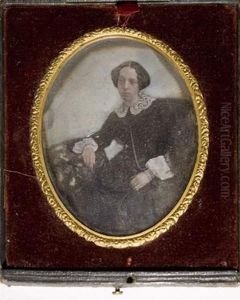Mayer Ernest & Pierson Louis Paintings
Mayer Ernest and Pierson Louis were two photographers who played a significant role in the development of photography in the 19th century, particularly in the realm of portraiture. Their collaboration led to the creation of one of the most important photographic studios in Paris during the Second French Empire.
Mayer Ernest, born in 1821, and Pierson Louis, born in 1815, came together to establish the studio 'Mayer et Pierson'. This studio became renowned for its high-quality portraits and was sought after by the elite of Parisian society. They were particularly known for their work with albumen silver prints, a technique that involved coating paper with albumen (egg white) and salts, then sensitizing it with a silver nitrate solution before exposure to light.
The studio they founded capitalized on the growing fascination with photography as a form of art and documentation, and they became one of the leading portrait studios in Paris. Mayer and Pierson photographed many notable figures of their time, including Napoleon III and Empress Eugénie. Their work was characterized by a sharp focus on the subject, a masterful use of lighting, and an attention to detail that made their portraits stand out.
Mayer and Pierson were also instrumental in popularizing the carte-de-visite, a type of small photograph mounted on a card, which became a widespread phenomenon in the 1860s. These cards were collected and traded among acquaintances and became a social trend of the period. The studio of Mayer et Pierson produced thousands of these cartes-de-visite, contributing to the format's popularity and becoming a staple in the social fabric of the time.
In 1865, Louis Pierson passed away, leaving Mayer to continue the work they had started together. Mayer Ernest continued to run the studio successfully until his own death in 1899. The legacy of Mayer et Pierson's work has been preserved in various collections, including museums and archives, where their photographs offer a glimpse into the faces and fashions of the Second French Empire. Their contribution to photographic techniques and the popularity of portrait photography remains significant in the history of photography.
